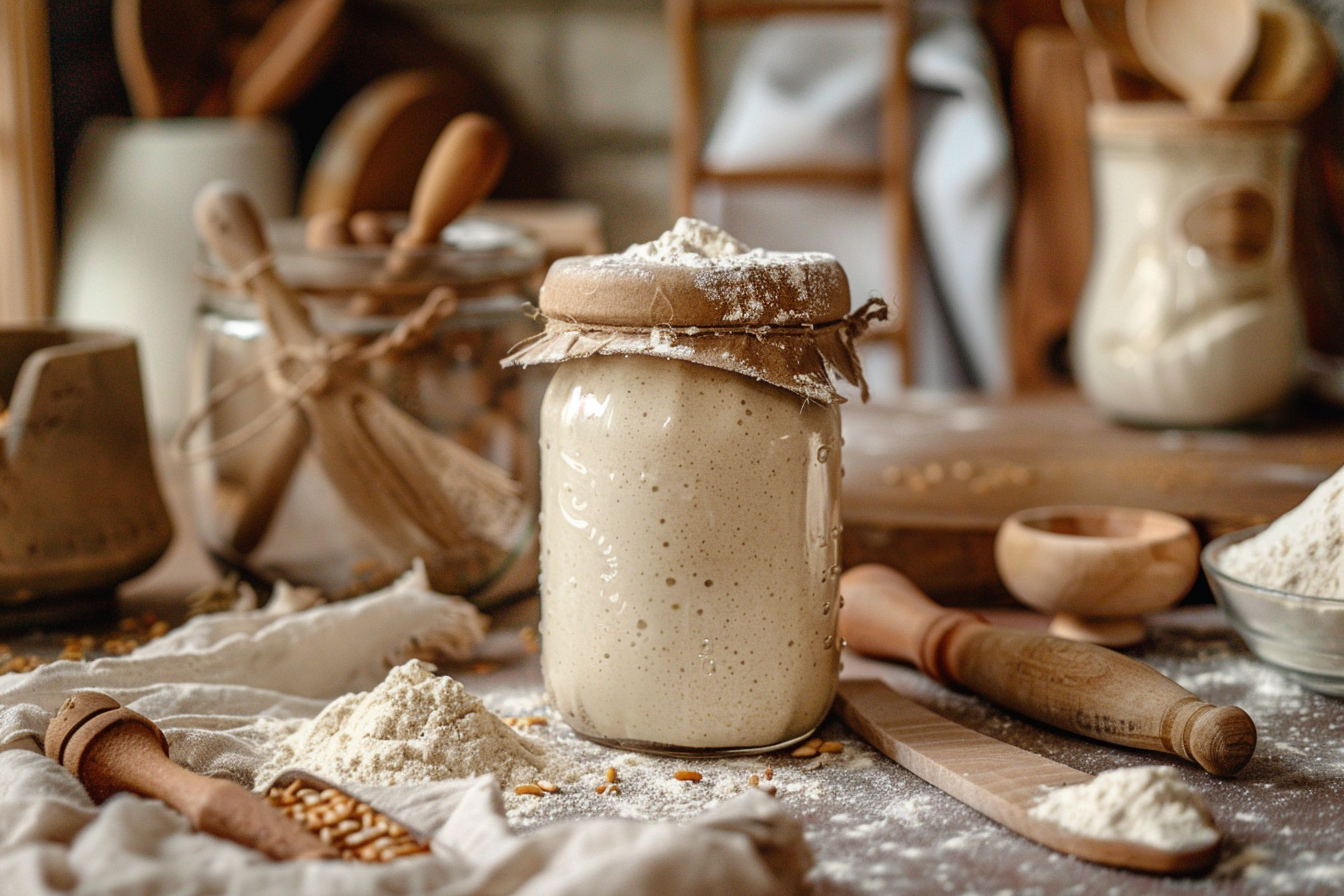Sourdough bread is as much a scientific marvel as it is an artisanal craft. At the heart of its tangy flavor, airy crumb, and crusty exterior lies a fascinating process: fermentation. This natural method transforms simple ingredients—flour and water—into a living ecosystem of wild yeast and bacteria.
In this article, we’ll delve into the science of sourdough fermentation, uncovering the roles of wild yeast and bacteria, how they work together, and the factors that influence the flavor and texture of your bread.
What Is Fermentation?
Fermentation is a biological process where microorganisms like yeast and bacteria convert carbohydrates (starches and sugars in flour) into gases, acids, and alcohol. This transformation gives sourdough its rise, flavor, and extended shelf life.
Key Players in Sourdough Fermentation:
- Wild Yeast:
- Naturally occurring fungi found in flour and the environment.
- Produces carbon dioxide (CO₂), which causes the dough to rise.
- Lactic Acid Bacteria (LAB):
- Beneficial bacteria that create lactic and acetic acids.
- Responsible for sourdough’s tangy flavor and natural preservation.
How Fermentation Works in Sourdough
- Breakdown of Starches:
Enzymes in flour, such as amylase, break down starches into simpler sugars (maltose and glucose). These sugars become food for wild yeast and LAB. - Yeast Activity:
- Wild yeast consumes sugars and produces CO₂ and ethanol.
- CO₂ gets trapped in the dough’s gluten network, causing it to expand and rise.
- Bacterial Fermentation:
- LAB convert sugars into lactic acid (mild, creamy flavor) and acetic acid (sharp, tangy flavor).
- This acid production lowers the dough’s pH, preserving it and creating sourdough’s signature taste.
The Role of Gluten in Fermentation
Gluten, a protein complex in wheat flour, forms an elastic network that traps the gases produced during fermentation. This gives sourdough its structure and chew.
How Gluten Develops:
- Hydration: Water activates gluten proteins (gliadin and glutenin).
- Kneading or Folding: Aligns gluten strands into a strong, stretchy matrix.
- Fermentation: The CO₂ produced by yeast stretches and strengthens the gluten network.
Factors That Influence Fermentation
- Temperature:
- Warmer temperatures (75–80°F / 24–27°C) speed up fermentation, favoring lactic acid production.
- Cooler temperatures (65–70°F / 18–21°C) slow fermentation and enhance acetic acid production.
- Hydration:
- Higher hydration levels (above 75%) create a wetter environment, encouraging bacterial activity and a more open crumb.
- Lower hydration produces a tighter crumb and slower fermentation.
- Flour Type:
- Whole wheat and rye flours contain more nutrients and enzymes, supporting faster and more robust fermentation.
- White flour creates a milder flavor but a more predictable rise.
- Fermentation Time:
- Longer fermentation allows for deeper flavor development but can risk overproofing.
- Shorter fermentation creates a milder flavor and denser crumb.
The Two Phases of Fermentation
- Bulk Fermentation:
- The first rise, where most of the yeast and bacterial activity occurs.
- Builds the dough’s structure and flavor.
- Final Proofing:
- The second rise, typically after shaping the dough.
- Allows the dough to relax and expand before baking.
Benefits of Fermentation in Sourdough
- Flavor Development:
- The acids and alcohol produced create a complex flavor profile, ranging from nutty and creamy to tangy and sharp.
- Improved Digestibility:
- Fermentation breaks down gluten and phytic acid, making sourdough easier to digest and increasing nutrient availability.
- Natural Preservation:
- The acidity inhibits mold growth and extends the bread’s shelf life.
Common Fermentation Challenges
- Underfermentation:
- Symptoms: Dense loaf, poor rise, bland flavor.
- Solution: Allow more time for bulk fermentation and ensure your starter is active.
- Overfermentation:
- Symptoms: Collapsed dough, overly sour flavor.
- Solution: Reduce fermentation time or lower the temperature.
- Weak Gluten Network:
- Symptoms: Dough tears easily, lacks structure.
- Solution: Improve kneading or folding techniques and use flour with higher protein content.
Enhancing Fermentation for Better Bread
- Cold Fermentation:
- Retard the dough in the refrigerator for 8–24 hours to develop flavor slowly.
- Use Whole Grains:
- Add a portion of whole wheat or rye flour for more nutrients and flavor complexity.
- Control Humidity:
- Use a proofing box or cover the dough to maintain consistent humidity during fermentation.
Fermentation is the heart of sourdough baking, turning simple ingredients into a symphony of flavors and textures. By understanding the science behind it, you can better control your dough, troubleshoot issues, and create sourdough bread that is not only delicious but also a testament to the power of natural processes.
Experiment with fermentation times, temperatures, and flours to unlock the full potential of your sourdough. Remember, every loaf is a learning experience, and the science of fermentation is your guide to mastering the art of sourdough.


